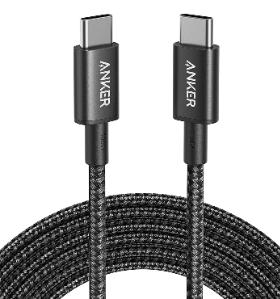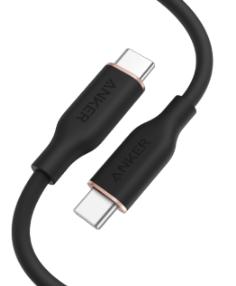In the fast-paced world of technology, it's easy to overlook the humble USB cable. However, these unassuming connectors have undergone a remarkable evolution, with the latest iteration, USB-C, revolutionizing the way we connect and transfer data. In this article, we'll take you on a journey from the early days of USB Type-A to the modern USB-C, shedding light on the advancements and benefits of each iteration.

The Evolution of USB Cables
USB Type-A: The Pioneer
The journey begins with USB Type-A, which made its debut in the late 1990s. Recognizable by its rectangular shape and flat, wide connector, Type-A quickly became the industry standard for connecting peripherals like keyboards, mice, and printers to computers. It also marked the first time consumers had a universal interface that didn't require special drivers, thanks to its plug-and-play functionality.
As technology advanced, the need for faster data transfer rates became apparent. This led to the development of USB 2.0, which significantly increased transfer speeds compared to the original USB 1.1 standard. This version of the Type-A connector is still widely used today, ensuring compatibility across a wide range of devices.
USB Type-B: Bridging the Gap
With the increasing popularity of external hard drives, printers, and other high-speed peripherals, the USB Type-B connector emerged. This connector is characterized by its square shape with a slightly curved top. Initially, Type-B was used primarily for connecting devices like printers, scanners, and some early external hard drives.
As demands for faster data transfer grew, so did the need for an upgraded USB standard. Enter USB 3.0, also known as SuperSpeed USB. This iteration introduced a new type of Type-A connector with additional pins and a distinctive blue color to signify its enhanced capabilities. USB 3.0 offered speeds up to 5 Gbps, a tenfold improvement over USB 2.0.
Simultaneously, USB Type-B underwent a transformation to accommodate the faster speeds. The result was the creation of the micro-B and the larger, more robust Type-B connector known as "Standard-B."
USB-C: A New Era of Connectivity

The most significant leap in USB technology arrived with the introduction of USB Type-C. This compact, reversible connector represented a dramatic departure from its predecessors. Unlike the older Type-A and Type-B connectors, which have distinct "up" and "down" orientations, USB-C can be inserted in any orientation, eliminating the frustration of trying to plug it in the right way.
USB-C also brought about a host of improvements in terms of performance. It supports USB 3.1, 3.2, and even the latest USB4 standards, providing transfer speeds of up to 40 Gbps and allowing for a wide range of applications, from charging laptops to connecting high-resolution displays.
Beyond speed and convenience, USB-C also boasts the versatility to transmit power, data, and audio/video signals simultaneously. This means a single USB-C port can be used for charging your laptop, connecting an external monitor, and transferring files—all at the same time.
Conclusion: The Future of Connectivity
The evolution of USB cables, from the familiar Type-A to the groundbreaking Type-C, reflects the relentless pursuit of faster, more versatile connectivity in the tech industry. USB-C has emerged as the new standard, offering a level of convenience and performance that was once unimaginable. As we look ahead, it's clear that usb c will continue to play a pivotal role in shaping the future of technology. Its universal compatibility, high-speed data transfer, and multifunctionality make it an indispensable tool for professionals, gamers, and everyday users alike. Embracing USB-C means embracing a future where seamless connectivity is the norm, unlocking a world of possibilities for innovation and collaboration.
